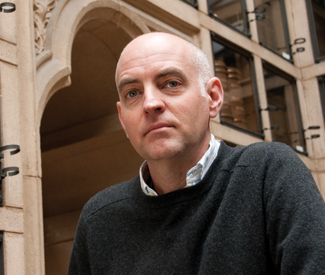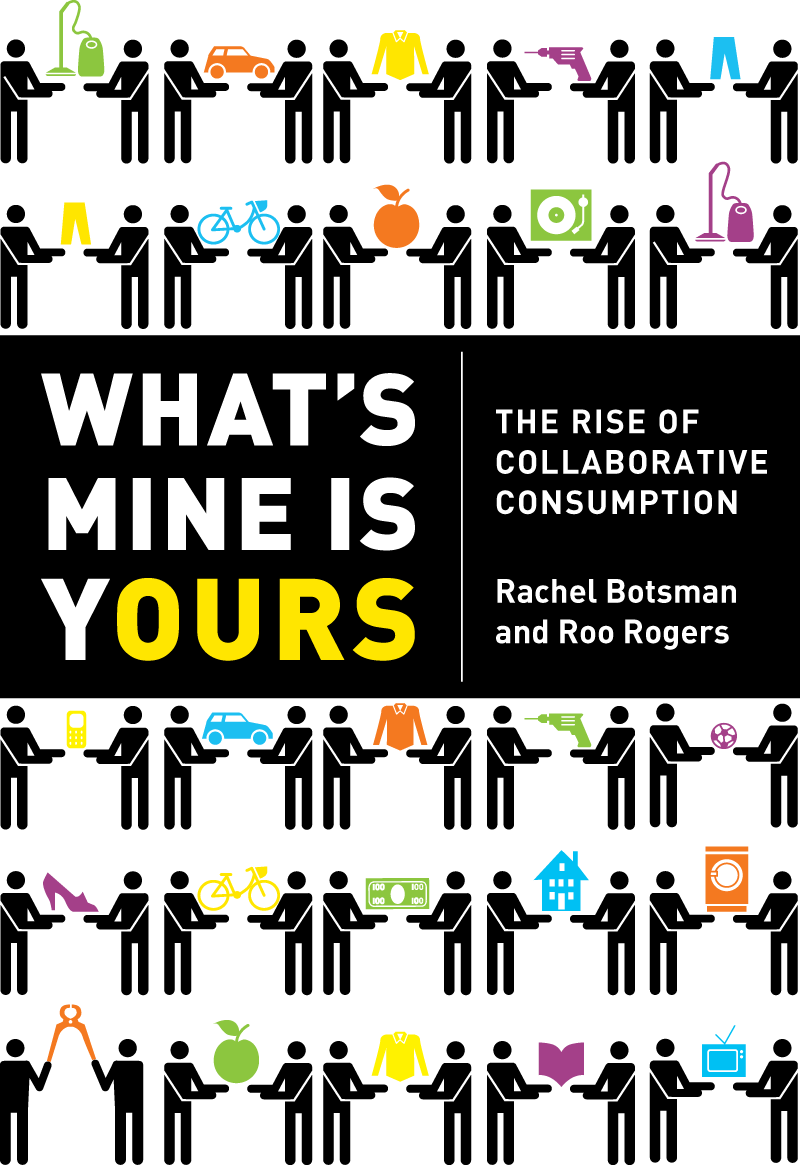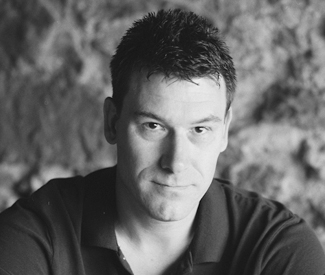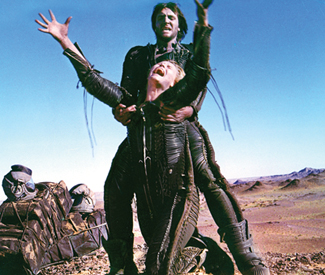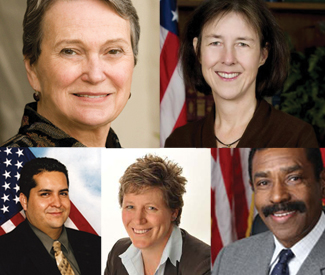steve@sfbg.com
Catbird turned me onto Airbnb almost two years ago, long before I’d ever heard of the “sharing economy” or “collaborative consumption,” terms the tech industry is now using for companies that facilitate peer-to-peer rentals or otherwise take transactions once done through Craigslist to a glitzy new commercial level.
We were working together to build the Temple of Flux for Burning Man 2010 and chatting in the shop one evening. I mentioned wanting to find someone to sublet my apartment for the nearly three weeks that I was to spend on the playa that year, and she sang the praises of Airbnb, which she had recently started using to make some extra cash by renting out a room in the house she owns on Potrero Hill.
“The reason I decided to do it instead of a full-time roommate is it fits my lifestyle better,” Catbird, aka Cathryn Blum, told me recently as we discussed her beloved Airbnb in light of recent controversies over whether such rentals should pay the city’s 14 percent hotel tax. Catbird loves to meet visitors from around the world and help show them sides of San Francisco hidden from downtown hotel dwellers, as well as being able to keep her guest room vacant for visiting friends or family.
“Airbnb has been a godsend, and it’s invigorated a lot of the neighborhoods that tourists might not come and visit,” she said. “We’re not competing with the hotels, the hotels don’t provide that kind of experience.”
That’s what she and other Airbnb customers argued last month at a San Francisco Tax Collector’s Office hearing on the issue, which resulted in the hotel tax [aka Transient Occupancy Tax] being applied to Airbnb and similar companies.
Airbnb was a godsend for me as well, a simple easing of my economic woes. At the time, I was just getting serious with a new girlfriend and spending most nights at her place. So we moved some of my stuff over there to clear space and protect my valuables, took some photos of my small studio apartment in the Mission, and created an Airbnb listing.
We initially listed my place for $75 per night, which more than covered my rent but was cheaper than most hotels, the sweet spot that would create enough demand that I could pick and choose guests to meet my needs. And it worked perfectly. Not only did I find tenants to fill most of my Burning Man vacancy, but I kept it up periodically throughout the fall, moving in with my girlfriend for days or weeks at a stretch and splitting the proceeds with her.
It seemed too good to be true. And as I began to learn, perhaps it was.
LAW AND TAXES
Something Airbnb doesn’t tell you when you sign up is that you may be breaking the law and/or your lease (its spokesperson says that warning is in its terms of service, but I never saw it). Frankly, I knew that my lease didn’t allow subletters, but my building is big, I really needed the money, and I figured that I wouldn’t get caught, a calculation that many thousands of customers of Airbnb and other companies regularly make as well.
Later, well into by first foray as a landlord, thanks to Airbnb, I began to learn about some other complications that this business model creates in big, popular cities like San Francisco and New York that have complicated laws regulating landlord-tenant relations. For example, it’s illegal in San Francisco to sublet your apartment out for more than you pay in rent.
I felt a little guilty about that one. In a city where almost two-thirds of residents are renters, yet where property owners wield tremendous economic and political power, there are good reasons for rent control, limits on converting apartments into condominiums, eviction protections, and the whole slew of complicated laws and regulations that govern the often-contentious relationship between landlords and tenants.
But nobody seemed to be getting hurt and this was easy money, thanks to an elegantly simple dot-com idea. Sure, there were risks, both from the powers-that-be and from the strangers moving into my home. A good friend of mine in San Francisco who used Airbnb kept his valuables in a locked closet, which his temporary tenants — who had used fake identities and fraudulent credit cards — broke into, stealing thousands of dollars worth of equipment and getting away with it.
By the end of the year, it began to dawn on me that this business model wasn’t as simple as it initially seemed, triggered partially when the company sent me a 1099 federal tax form for the thousands of dollars I earned in 2010. Oh yeah, taxes, shit. So I paid my state and federal taxes on what had once seemed like free money, and I began to wonder what this “godsend” really meant for San Francisco, just as various advocacy groups were beginning to explore the issue.
“We began working on this issue a few years ago when we saw a big number of tourist conversions,” said Ted Gullicksen, executive director of the San Francisco Tenants Union. He discovered thousands of apartments — sometimes even entire buildings, usually those covered by rent control laws — were being taken off the rental market for use by tourists, sometimes after evictions to clear them of tenants. If I could use these sites to make money, unscrupulous landlords could as well.
“It shouldn’t even get to a tax issue because much of this is illegal,” Gullicksen said, noting that landlords opposed legislation a few years ago to give tenants more rights to sublet their apartments or add additional roommates. “This talk of shared economy strikes me as the wealthy asking the less wealthy to sacrifice.”
Advocates of the sharing economy argue that it’s just the opposite, making environmentalist and even socialist arguments that it’s a smart way of using fewer resources that empowers working class people.
“This idea of supplementing the formal economy with an economy based on sharing and bartering is very powerful. If you supplement a formal economy with an economy based on sharing you will have a lighter economic footprint and you would rely on relationships with people and actually, with less income, have a higher standard of living,” progressive activist Van Jones — whose new book The Green Collar Economy, discusses collaborative consumption — told us last month.
But it doesn’t usually feel quite so populist. Ron Conway, the billionaire angel investor who helped funnel hundreds of thousands of dollars in tech money to groups supporting Mayor Ed Lee’s election campaign last year, has significant investments in Airbnb and other “shareable” companies that Lee opposes taxing, as The New York Times reported last month.
Around that same time, I, along with many other local journalists, was invited to a fancy round-table dinner hosted by SparkPR to facilitate schmoozing with a half-dozen collaborative consumption start-ups, an event that felt more like the decadent peak of the last dot-com bubble than the launching of a people-powered economic revolution.
WINED AND DINED
Over fine wine and a seated gourmet dinner in a private room in Perbacco Ristorante + Bar, journalists representing the New York Times, San Francisco Examiner, Bloomberg, TechCrunch, and other media outlets chatted with representatives from Love Home Swap, Getaround, Zimride, Event Up, and DogVacay.
This was the latest event in the public relations blitz by advocates of “The Sharing Economy,” which was the title of an event at the San Francisco Planning and Urban Research Association two weeks earlier, which featured representatives from Airbnb, TaskRabbit, Shareable, Vayable, and Getaround (representatives of this car-sharing company do indeed seem to get around).
Our dinner began with introductions, and Love Swap Home founder Debbie Wosskow said she had come all the way from London for this dinner and some related meetings, on the ground just 36 hours. “I thought I could learn a lot from you guys out here,” she said in her charming British accent, later calling San Francisco the world hub for this new economic approach.
“Our business model is very simple: it’s like online dating for homes,” she said, explaining how the company registers people with cool homes that they can vacation-swap with others they meet through the site. Contrasting it with Airbnb, she said, “We’re swapping purists…I was less interested in turning my home into a money-making machine than moving my home to places around the world.”
The company caters mostly to those with higher-than-average incomes, while others at the table seem to be giving more structure to underground transactions pursued by the average Craigslist or Yelp user. “We have a platform of trusted folks who watch your dogs in their own homes,” was how Dog Vacay owner Aaron Hirschhorn described the business he started with his wife, which attracted $1 million in venture capital financing and now has 10 employees.
“I want to be the premiere national pet services company,” Hirschhorn said. “That’s the long-term play, but in the near-term we’re solving an immediate problem. And we’re giving people a chance to make money.”
As dinner was served, SparkPR’s Jamie Walker played hostess and encouraged us to chat about our common issues, so I offered an apparently impertinent topic for guests to address: “How do you all feel about taxes?”
An uncomfortable silence chilled the room, but I asked them to humor me because it was Tax Day and I was curious how they all felt about being required to pay taxes on the economic transactions they were facilitating. Again, silence, before someone finally ventured an answer.
“There are other societal benefits to this collaborative consumption industry,” was how Getaround’s Avery Lewis answered my question, talking about the many economic and environmental benefits of people being able to share their cars or avoid having to own a car for only occasional use.
And that may be true, but it doesn’t really answer the question: Why should these economic transactions be exempt from the taxes charged on most other economic transactions?
SOME THINGS DON’T CHANGE
Airbnb spokesperson Kimberly Rubey and Airbnb customers who testified at the tax hearing also speak of the wide variety of social and economic benefits of the service, and they make a compelling case that this company — with 100 employees here and 300 around the world facilitating 5 million nights booked in four years, up from just 1 million a year ago — is a boon to San Francisco.
But when you push them on the tax issue, they don’t know quite what to say. Rubey abruptly ended two short phone interviews when I pressed for an answer, both times saying she was late for meetings and would get back to me. The third time, she had this statement prepared: “We do not shy away from tax obligations, nor do we believe that all types of private residential rentals should be excluded from transient occupancy tax in all situations. That said, we do think that staying in someone’s spare bedroom or in someone’s home while they are away is different in a variety of ways than staying in a hotel.”
Yet that distinction isn’t one made in the city’s Transient Occupancy Tax law, says Greg Kato, the policy and legislative manager for the Tax Collector’s Office. “When we talk about a guest room under the law, that does include private residences,” he told us. “We want to make sure we’re taxing everyone properly.”
It was a broad and fairly unusual coalition of groups that pushed the city to begin regulating and taxing Airbnb and similar companies — from the Tenants Union and labor unions on the left to Hotel Council and Building Owners and Management Association on the other end the spectrum — making the prospects of a successful legislative challenge to the tax law interpretation unlikely.
Gullicksen said Airbnb may be one of the biggest companies affected by the ruling, but it isn’t the worst. He said Vacation Rental By Owner (www.vrbo.com) converts entire blocks of apartments into tourist hotels. By contrast, he said many renters use Airbnb to occasionally supplement their incomes.
“It depends on how often it’s used and to what scope it’s used,” he said.
Mayor Lee and some members of the Board of Supervisors recently created a Sharing Economy Working Group to hammer out those distinctions and make policy recommendations, but it has yet to be constituted or begin meeting. And Board President David Chiu has introduced legislation developed by the Tenants Union to ban the worst “hotelization” of rental units by corporations.
I’ll be curious to see how these issues play out, even though I no longer use Airbnb. Advocates for collaborative consumption seem to think they’ve invented something new under the sun and the rest of us just need to catch on. “When new business models emerge, you’re going to constantly be in ongoing discussions with policymakers to educate them about the difference with traditional models,” Rubey said.
Clearly, they’ve convinced Mayor Lee, who unsuccessfully sought a delay in the Tax Collector’s ruling, following the tax breaks he extended last year to Twitter, Zynga, and other tech companies. But I’m less convinced. Airbnb once seemed like a simple and harmless way to make extra money, but in San Francisco — where landlords and tenants often battle over the very soul and essence of the city — life here and the policies that govern it are endlessly complicated. And that’s nothing new.

